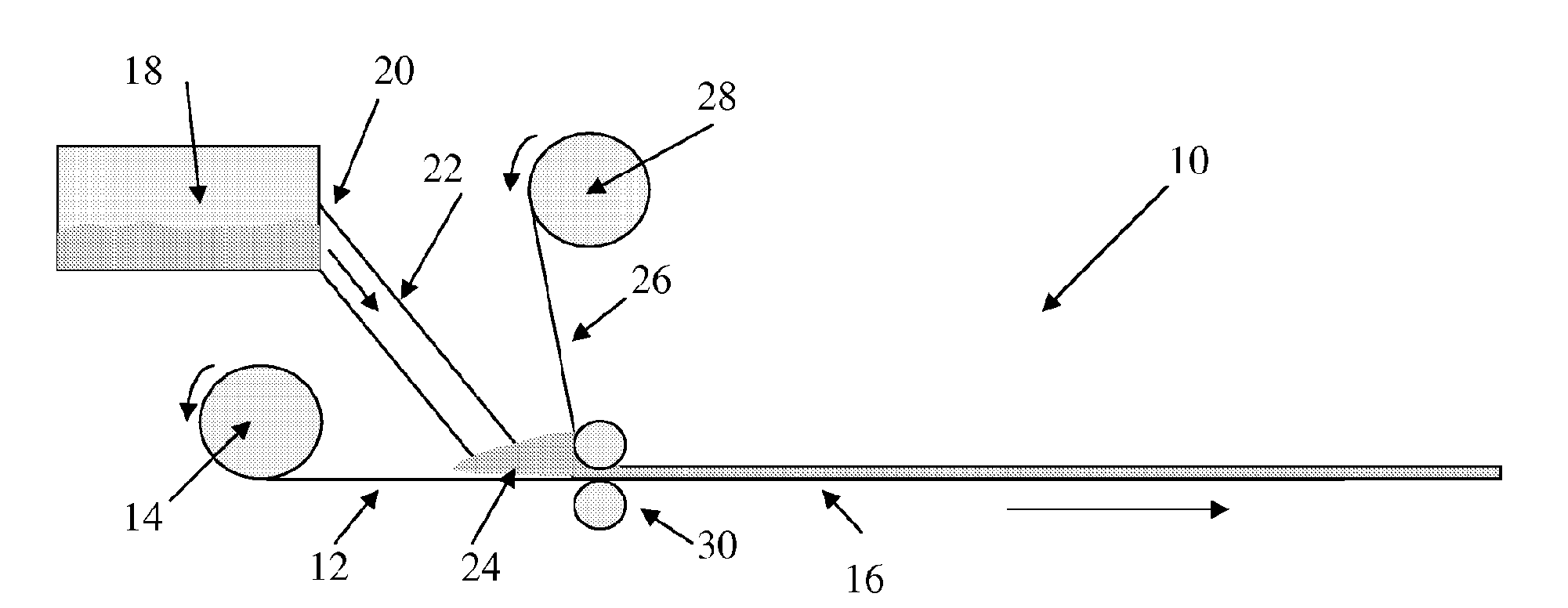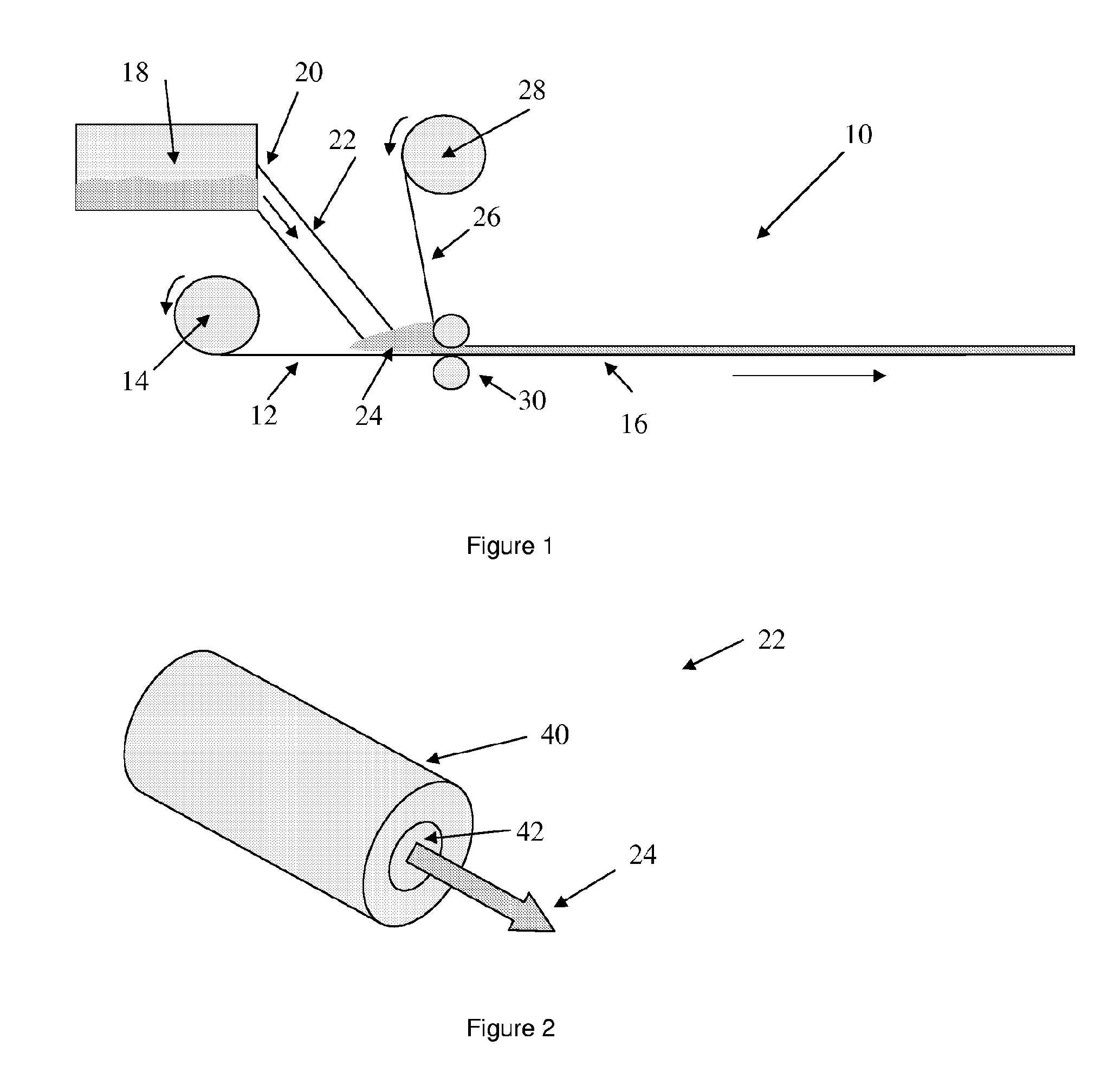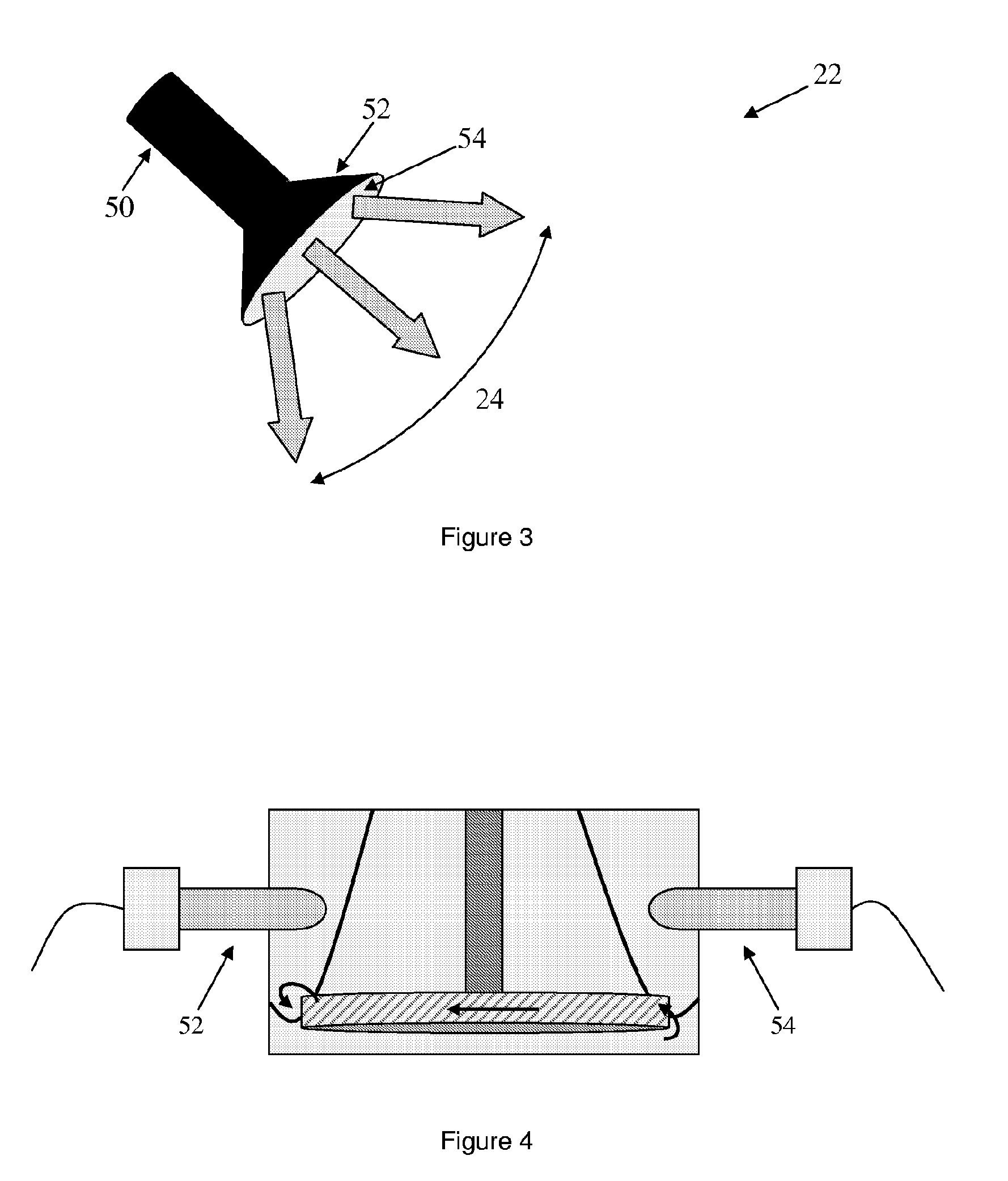Cementitious Board Manufacture
a cementitious board and manufacturing technology, applied in the direction of electrostatic spraying apparatus, coatings, mixers, etc., can solve the problems of exacerbated loss of acceleration efficiency of conventional accelerator materials, relatively short shelf life of fresh ground gypsum, etc., to reduce the setting time, reduce the amount of material in the mixer, and improve the effect of cementitious board manufacturing
- Summary
- Abstract
- Description
- Claims
- Application Information
AI Technical Summary
Benefits of technology
Problems solved by technology
Method used
Image
Examples
example 1
[0054]Prisms were made using 1000 g of stucco at three different water gauges of 70, 80, and 90 wt % of stucco. Ultrasonic energy was applied to the slurry for 3, 5 and 10 seconds using an ultrasonic probe with a power output of 1 kW. A large high-speed blender was used to mix the stucco and water for a dispersion time of 5 seconds. The water used remained at a constant temperature of 40° C. No foam was added to the slurry in this case.
TABLE 1DifferenceAverageWaterInitial SetFinal Setin SetAverageCompressiveInsonation TimeGaugeTimesTimesTimeDensityStrength(seconds)(wt %)(minutes)(minutes)(minutes)(kg / m3)(MPa)0708.109.45108012.710704.507.00−2.45107814.60808.009.20100410.43806.567.57−2.0399410.90808.3510.109959.95806.208.20−2.3099010.30808.159.459869.610805.507.13−2.3296910.90908.009.509138.23906.578.00−1.509218.60908.309.309598.05906.387.40−2.309279.50908.3010.159128.410906.378.00−2.159178.8
example 2
[0055]Tests were carried out to determine the effect of ultrasonic acceleration on foamed slurries. Prisms were made using 1000 g of stucco with a water gauge of 90 wt % of stucco. A foam generator was used to produce the foam to be added to the stucco blend. The foam generator was set to have an airflow rate of 2.5 I / min, foam flow rate of 0.25 l / min, and a foam concentration of 0.3%. To produce the slurry mix, a large blender was used on low speed for a total dispersion time of 10 seconds. The 1 kW ultrasonic probe was used at insonation times of 3, 5 and 10 seconds to accelerate the set of the gypsum slurry.
[0056]The stucco and water was mixed in a large batch mixer for 3 seconds before the foam was added to the blend and mixed for a further 7 seconds to produce samples 1 and 2. In the case of samples 3 and 4, stucco was mixed with water for 3 seconds before the foam was added and mixed for a further 4 seconds.
RESULT TABLE 2DifferenceAverageInsonationInitial SetFinal Setin SetAve...
example 3
[0057]To compare the set times obtained with particulate accelerator as opposed to solely ultrasonic energy, prisms were made to test the effect of ultrasound on particulate accelerator (GMN). In this case, no foam was added and a water gauge of 90 wt % of stucco with a water temperature of 40° C. was used. A large high-speed blender was used to mix the stucco and the GMN with water for a 5 second dispersion time. GMN was hand mixed into dry stucco powder for 30 seconds before making the slurry in the blender.
RESULT TABLE 3DifferenceAverageInsonationInitial SetFinal Setin SetAverageCompressiveTime% GMNTimeTimeTimeDensityStrength(seconds)(wt %)(minutes)(minutes)(min)(kg / m3)(MPa)control00.53.003.45905.898.3330.52.123.00−0.45852.524.2350.52.243.00−0.45815.205.65100.51.502.48−1.37829.944.66control00.15.306.15904.248.6330.14.305.30−1.25880.618.5550.13.454.40−2.15876.047.32100.13.504.54−2.01892.167.37control008.5011.00903.856.921004.305.20−6.20921.2111.00
PUM
| Property | Measurement | Unit |
|---|---|---|
| Time | aaaaa | aaaaa |
| Fraction | aaaaa | aaaaa |
| Fraction | aaaaa | aaaaa |
Abstract
Description
Claims
Application Information
 Login to View More
Login to View More - R&D
- Intellectual Property
- Life Sciences
- Materials
- Tech Scout
- Unparalleled Data Quality
- Higher Quality Content
- 60% Fewer Hallucinations
Browse by: Latest US Patents, China's latest patents, Technical Efficacy Thesaurus, Application Domain, Technology Topic, Popular Technical Reports.
© 2025 PatSnap. All rights reserved.Legal|Privacy policy|Modern Slavery Act Transparency Statement|Sitemap|About US| Contact US: help@patsnap.com



